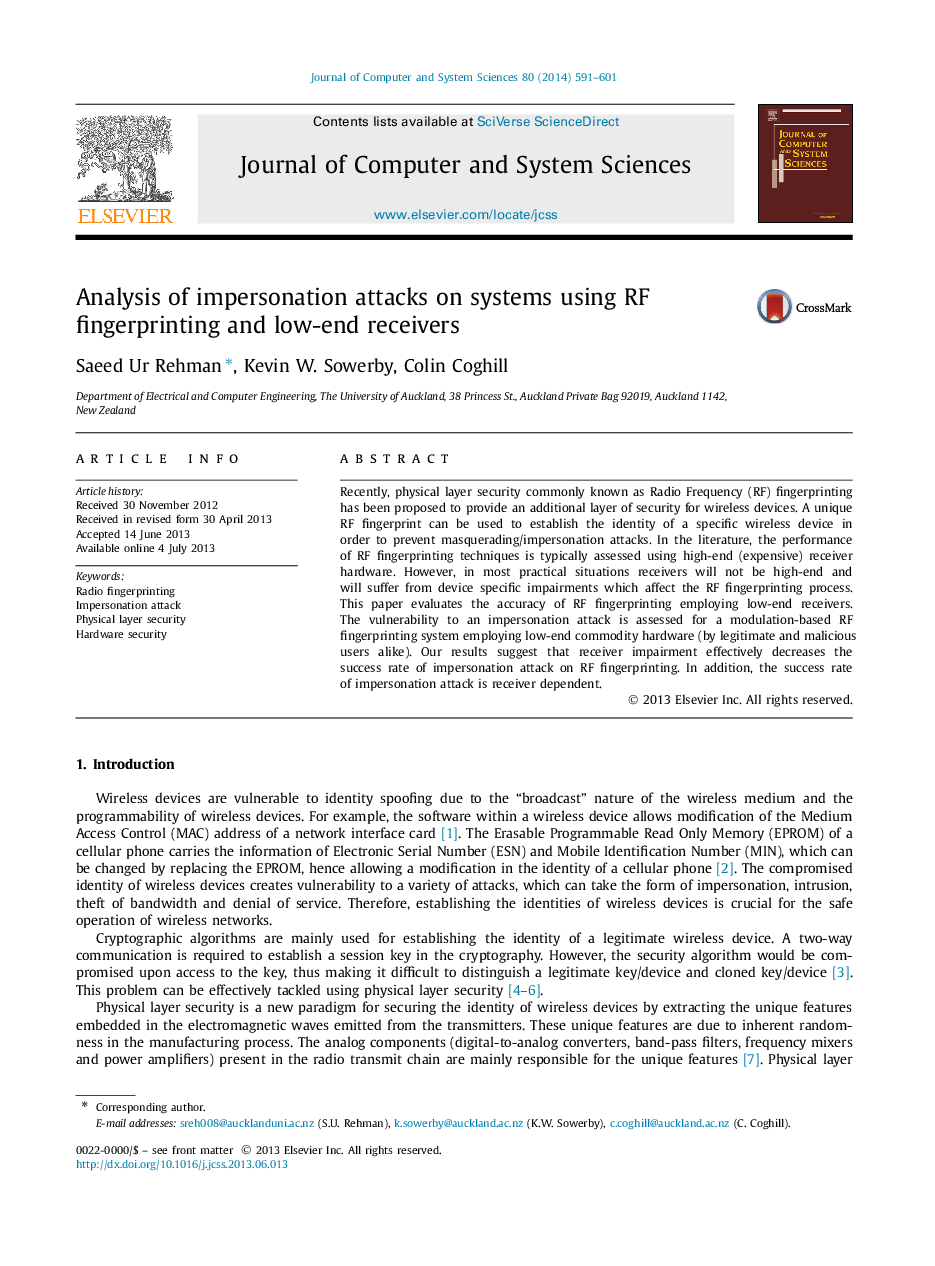| Article ID | Journal | Published Year | Pages | File Type |
|---|---|---|---|---|
| 429816 | Journal of Computer and System Sciences | 2014 | 11 Pages |
•The vulnerability to an impersonation attack is assessed for a modulation-based RF fingerprinting system employing low-end commodity hardware (by legitimate and malicious users alike).•All the transceivers (including two impersonators) have the same manufacturer and their transceiver front ends are equipped with similar components.•A receiverʼs front end also contributes to its RF fingerprinting of a specific transmitter.•The success rate of an impersonation attack is receiver dependent and receiver impairment effectively decreases this rate.
Recently, physical layer security commonly known as Radio Frequency (RF) fingerprinting has been proposed to provide an additional layer of security for wireless devices. A unique RF fingerprint can be used to establish the identity of a specific wireless device in order to prevent masquerading/impersonation attacks. In the literature, the performance of RF fingerprinting techniques is typically assessed using high-end (expensive) receiver hardware. However, in most practical situations receivers will not be high-end and will suffer from device specific impairments which affect the RF fingerprinting process. This paper evaluates the accuracy of RF fingerprinting employing low-end receivers. The vulnerability to an impersonation attack is assessed for a modulation-based RF fingerprinting system employing low-end commodity hardware (by legitimate and malicious users alike). Our results suggest that receiver impairment effectively decreases the success rate of impersonation attack on RF fingerprinting. In addition, the success rate of impersonation attack is receiver dependent.
